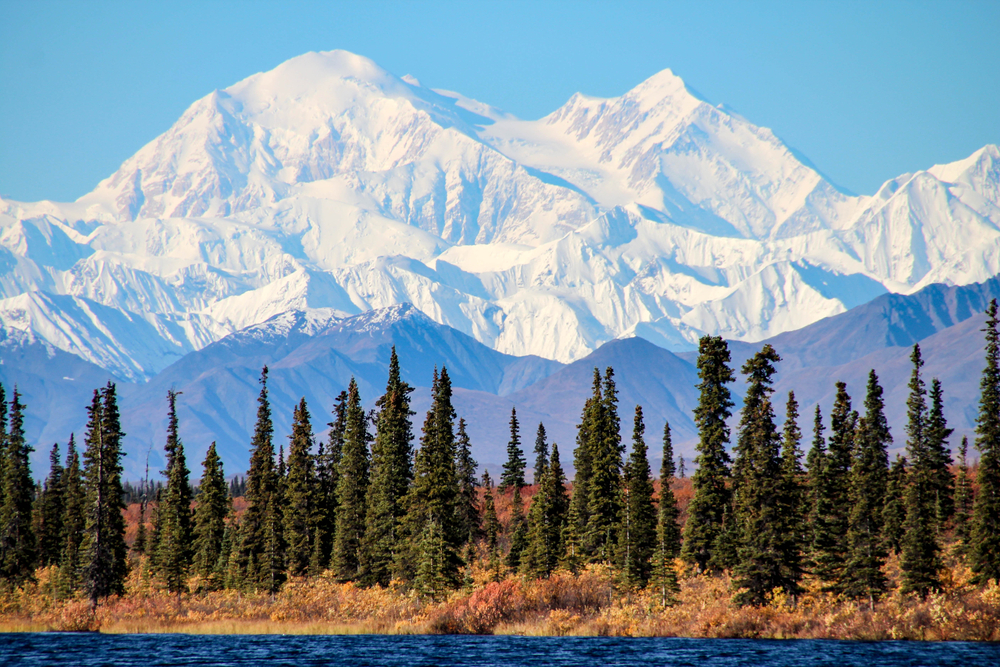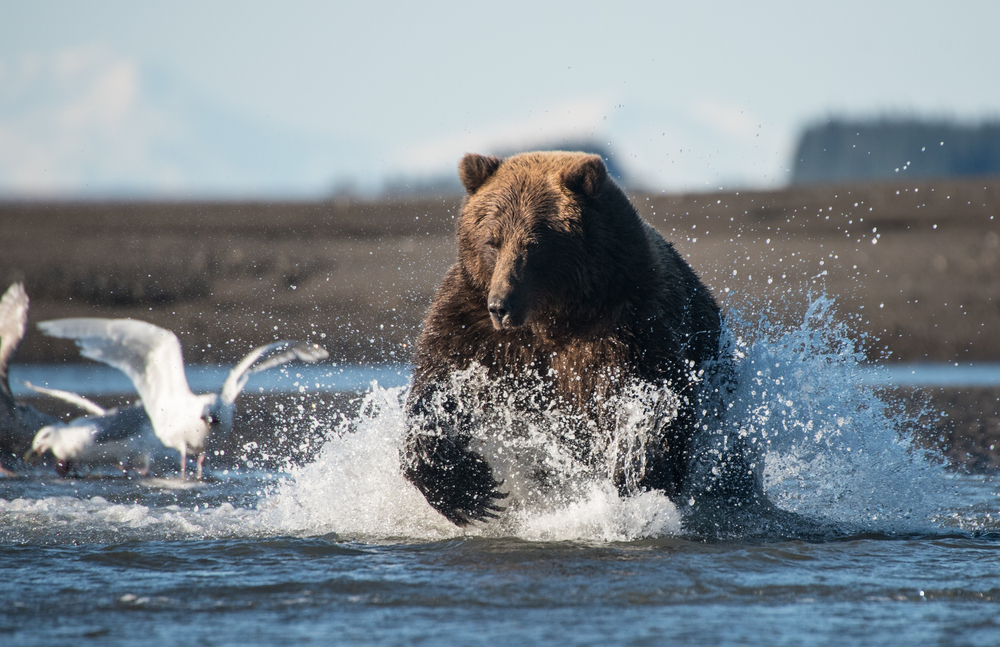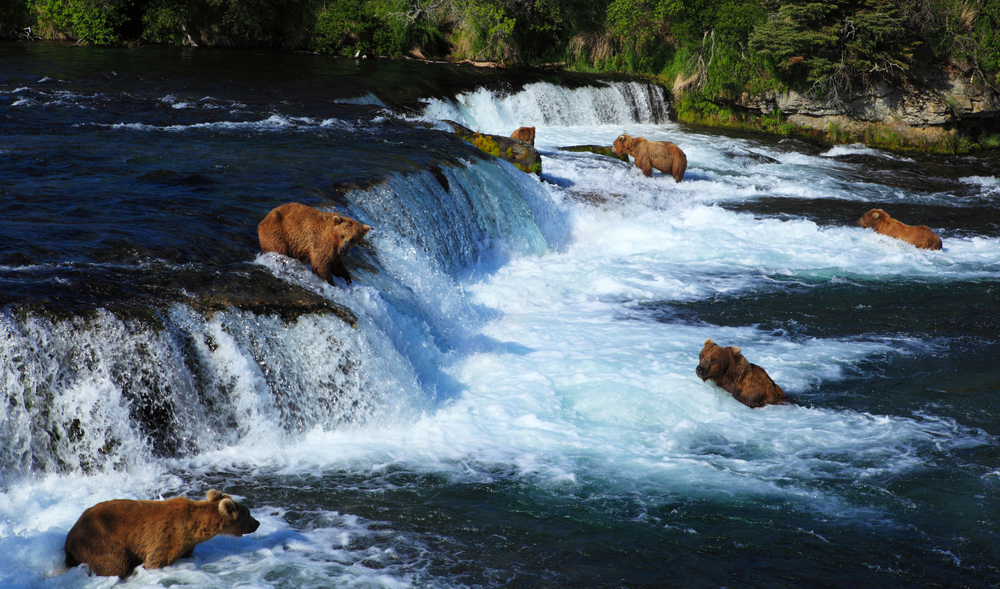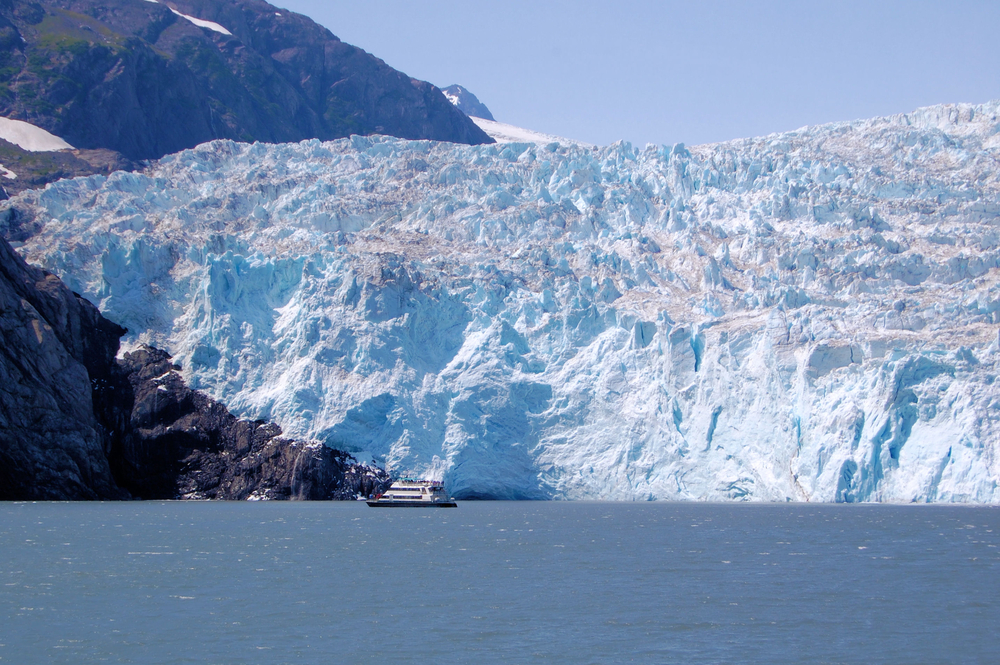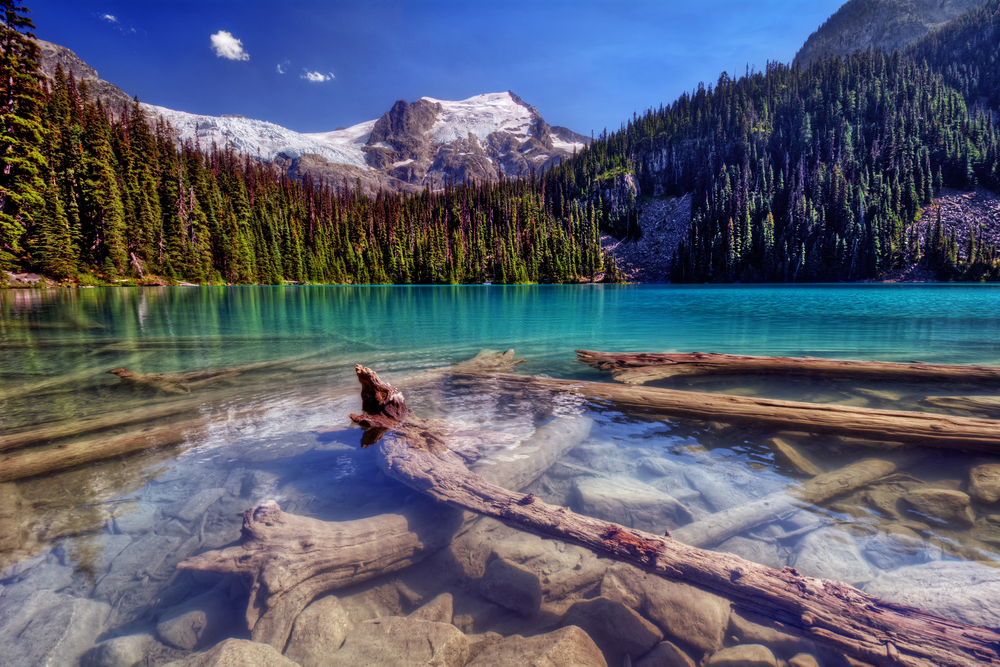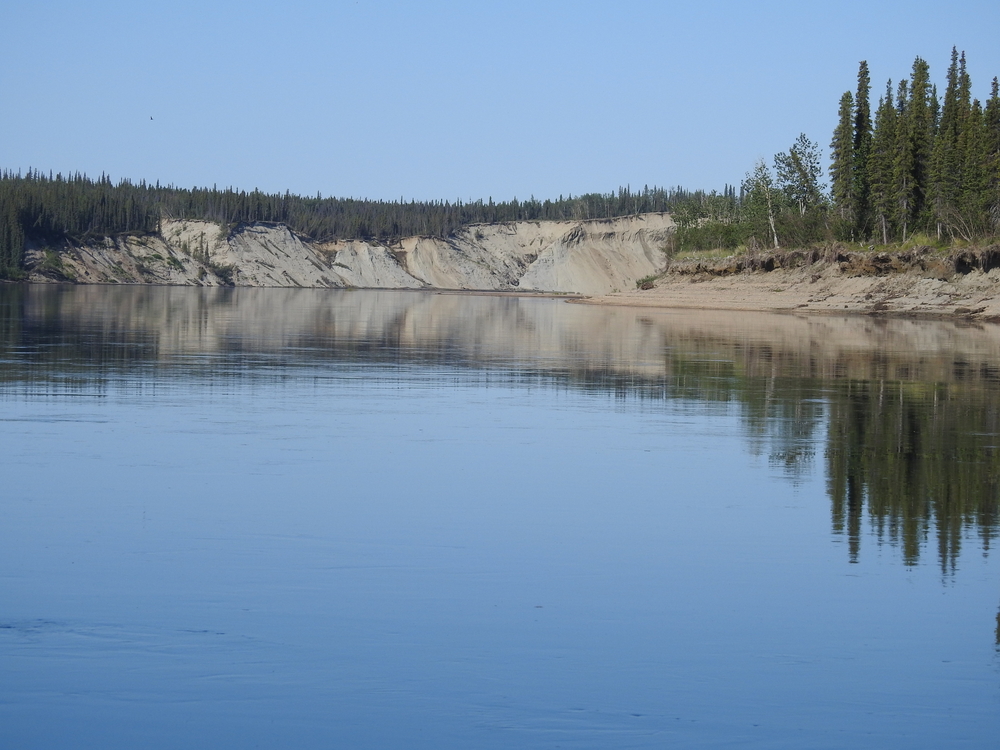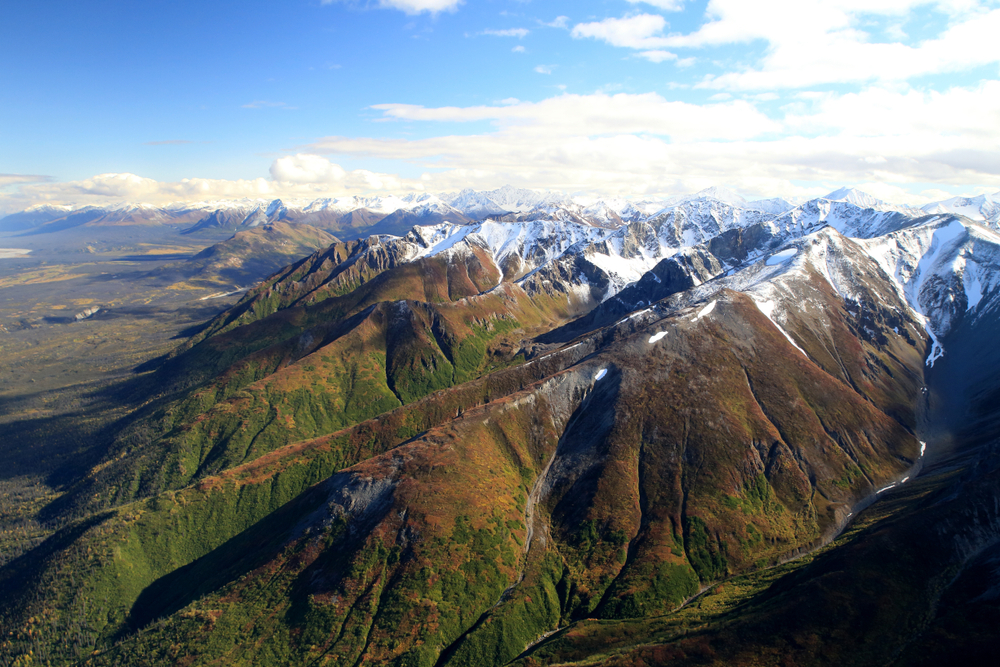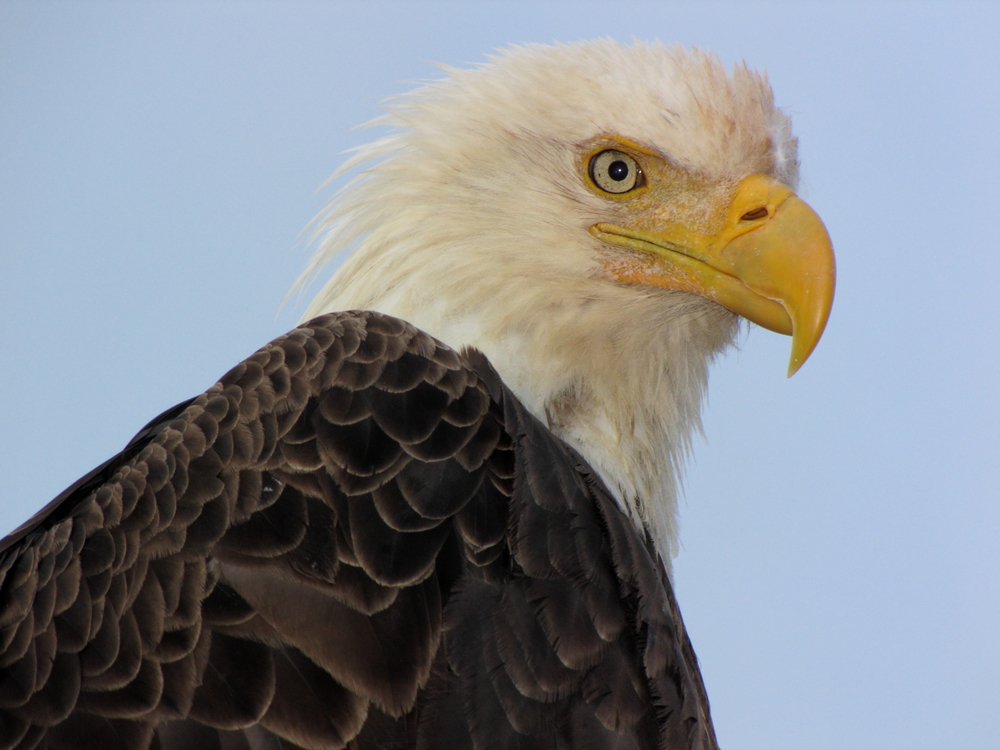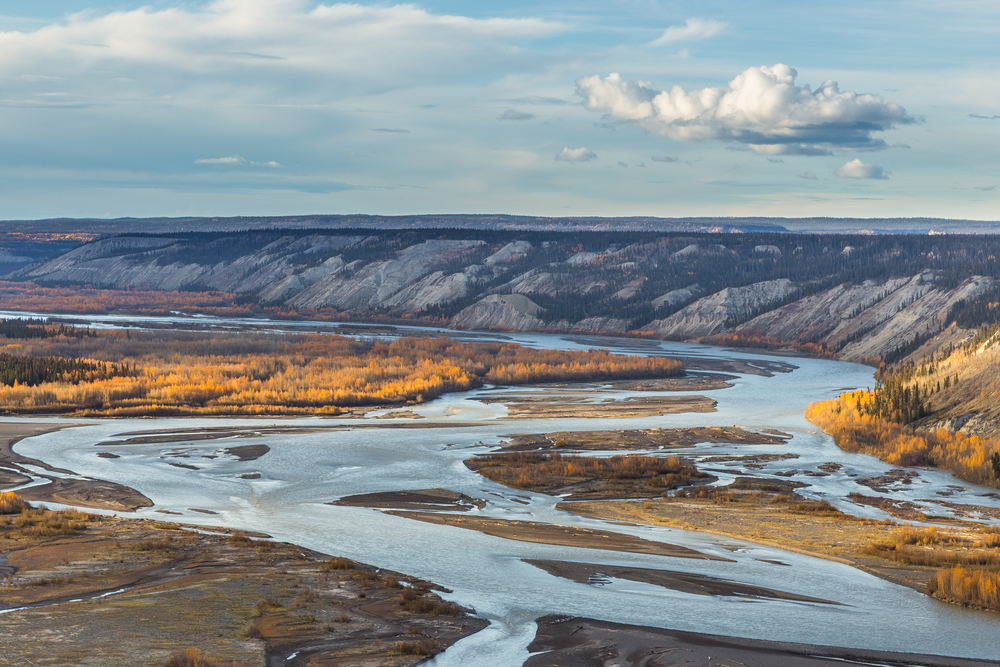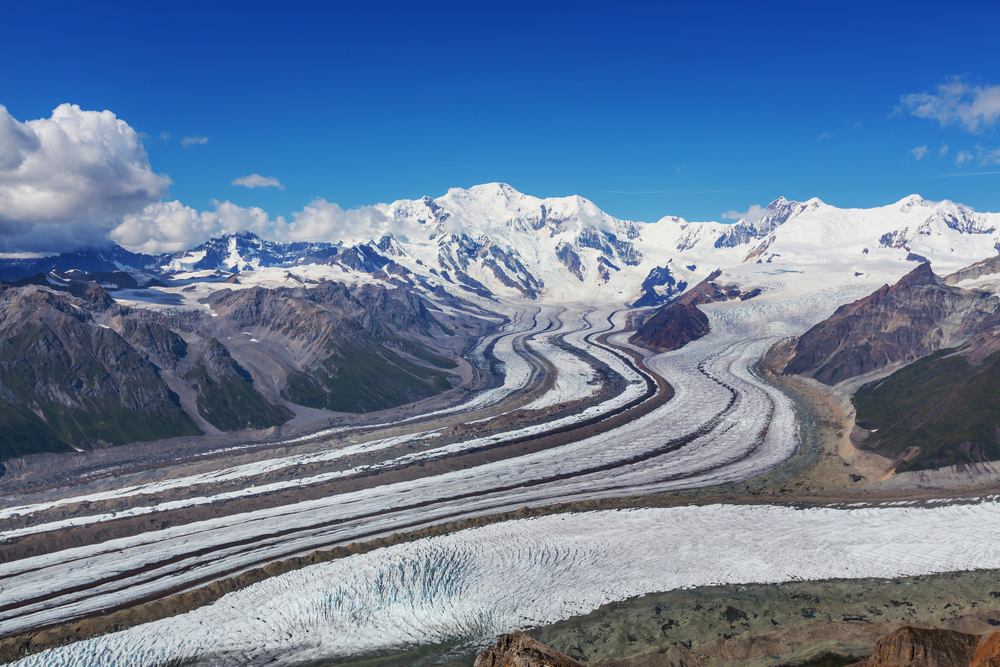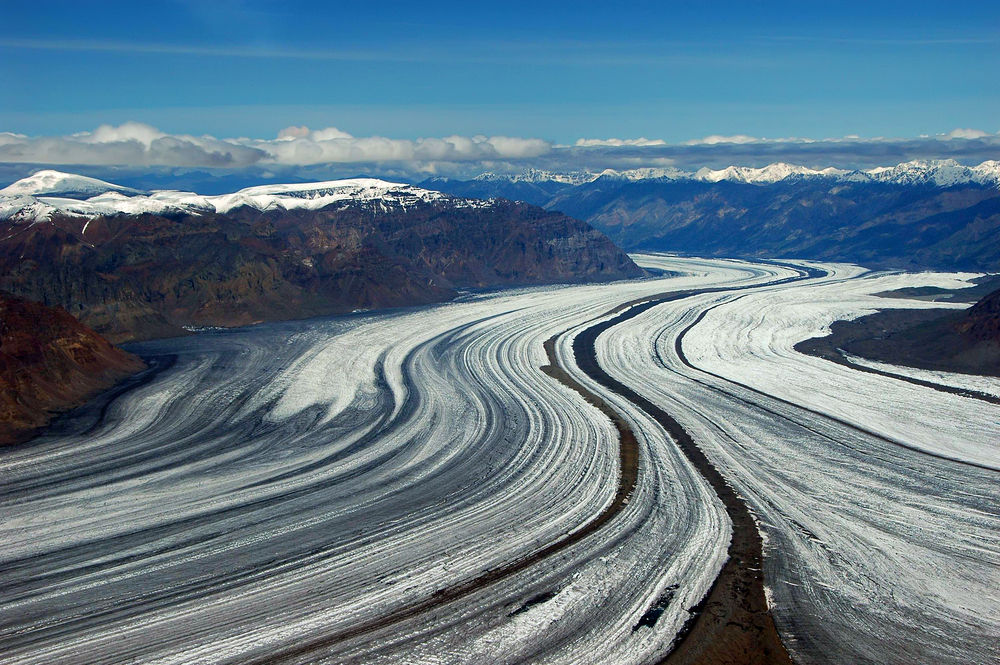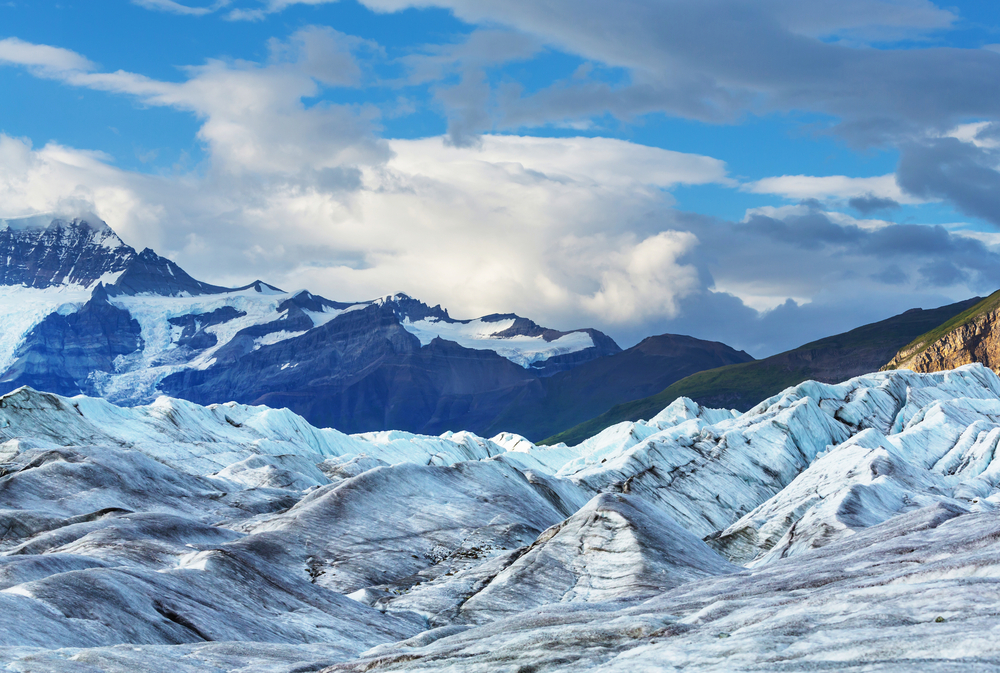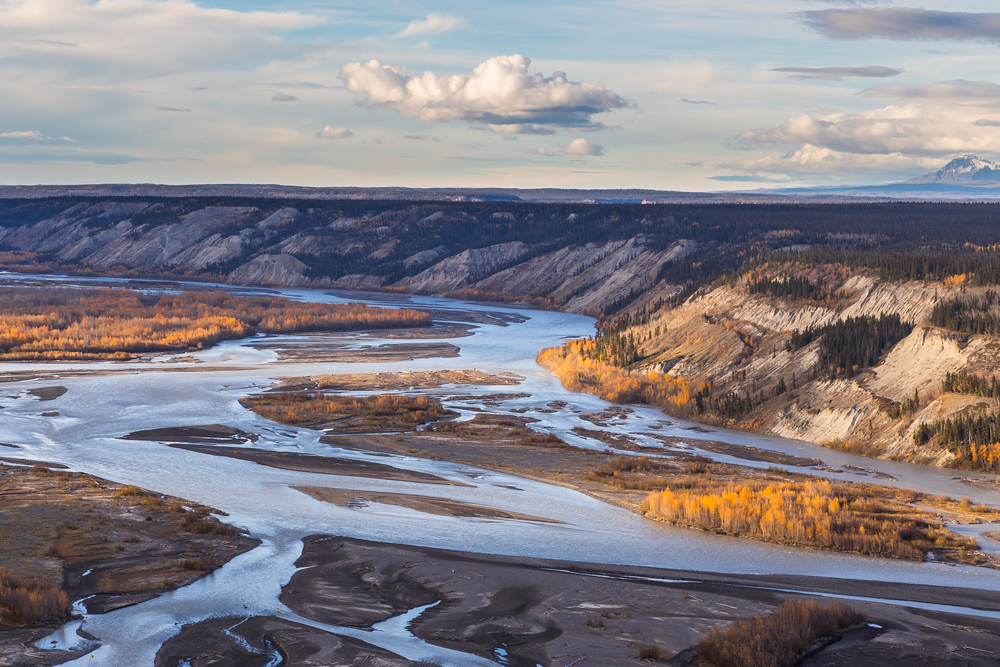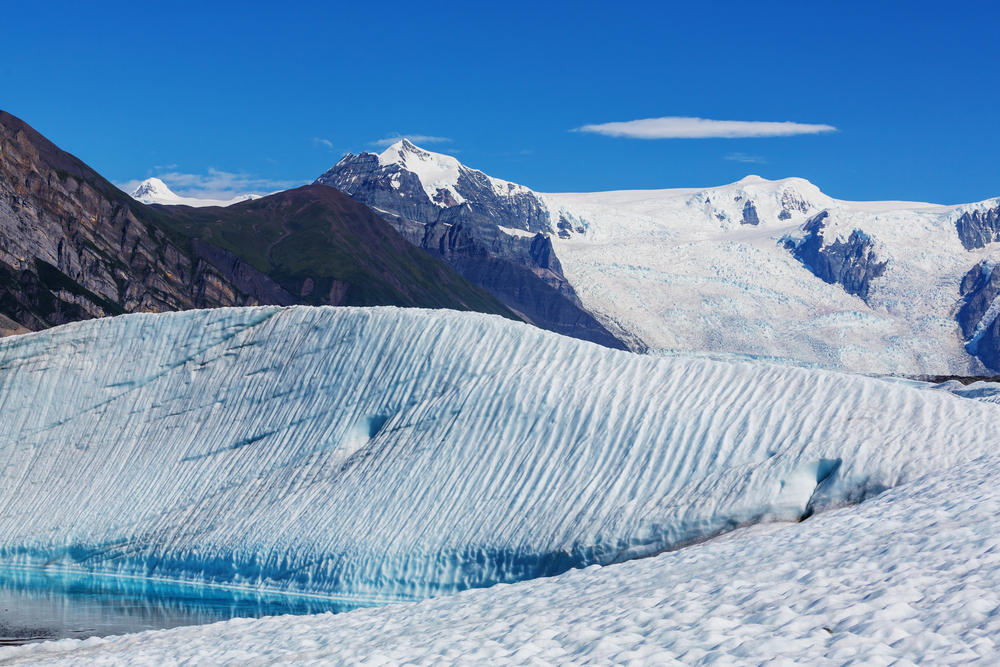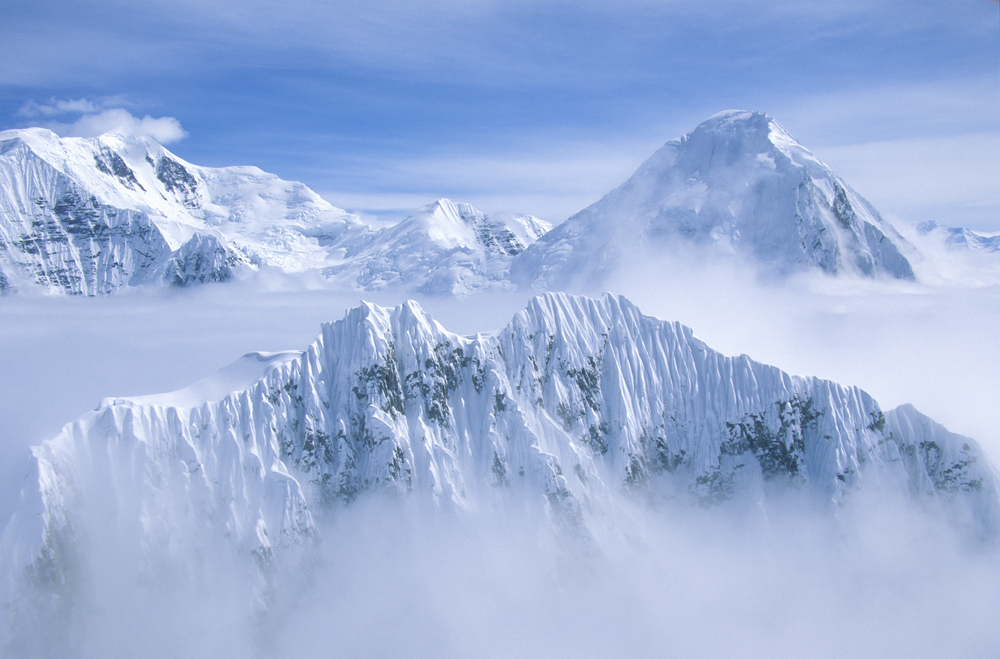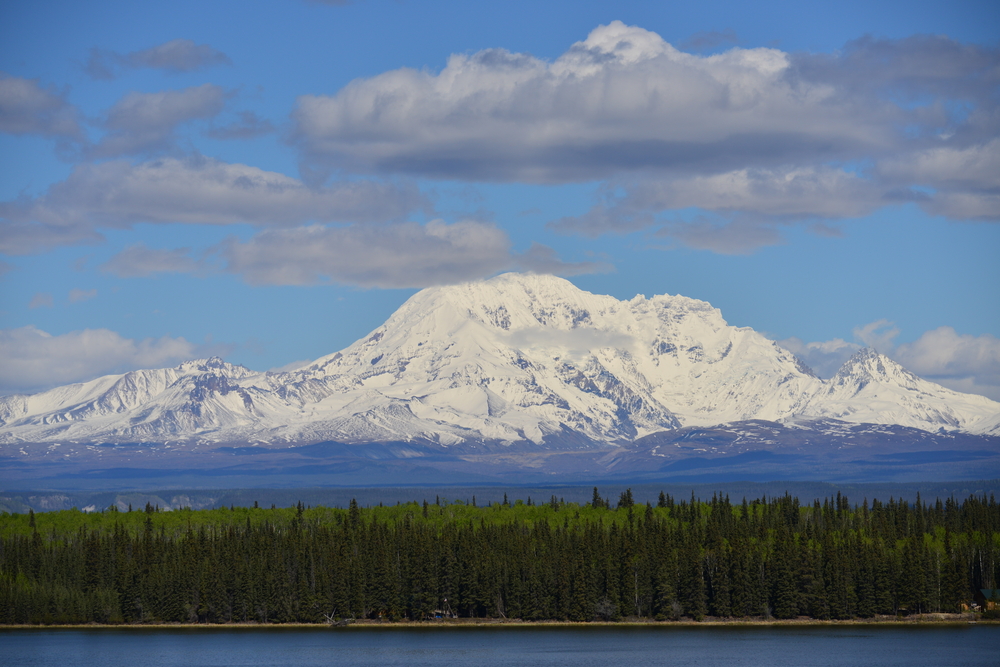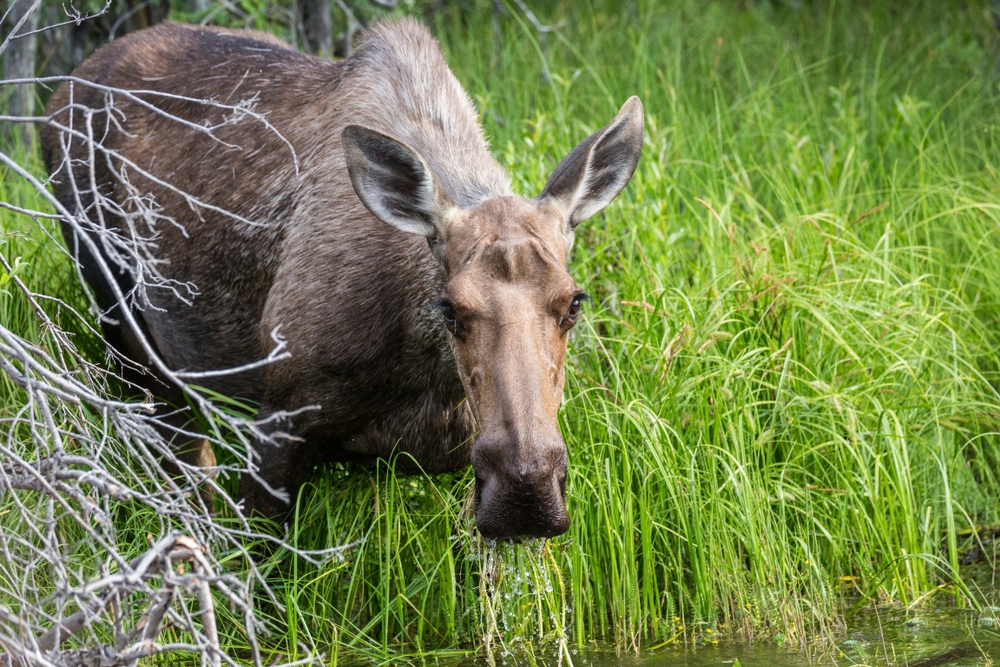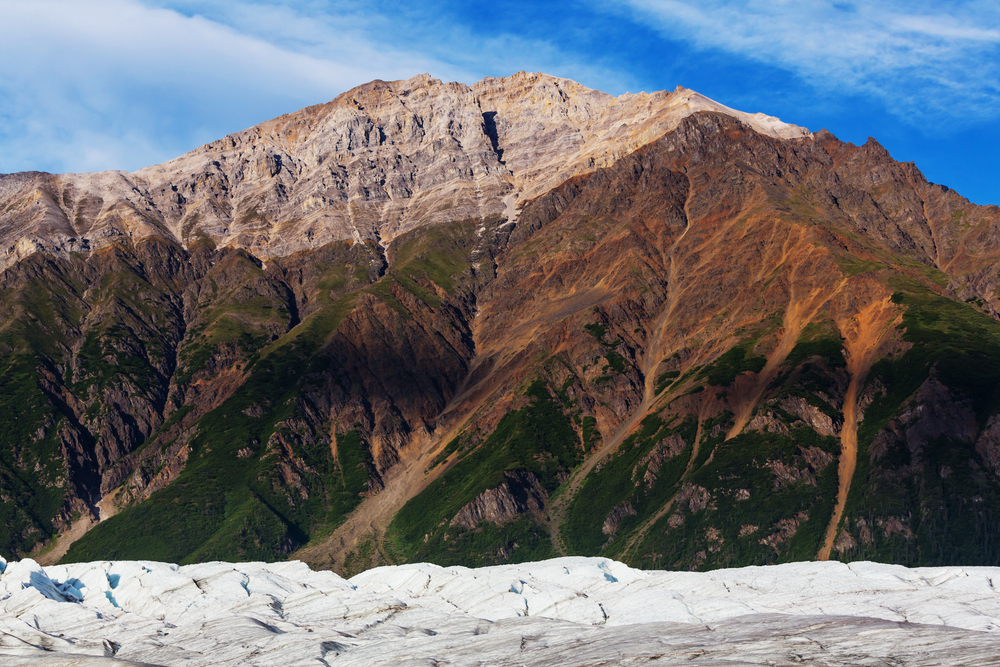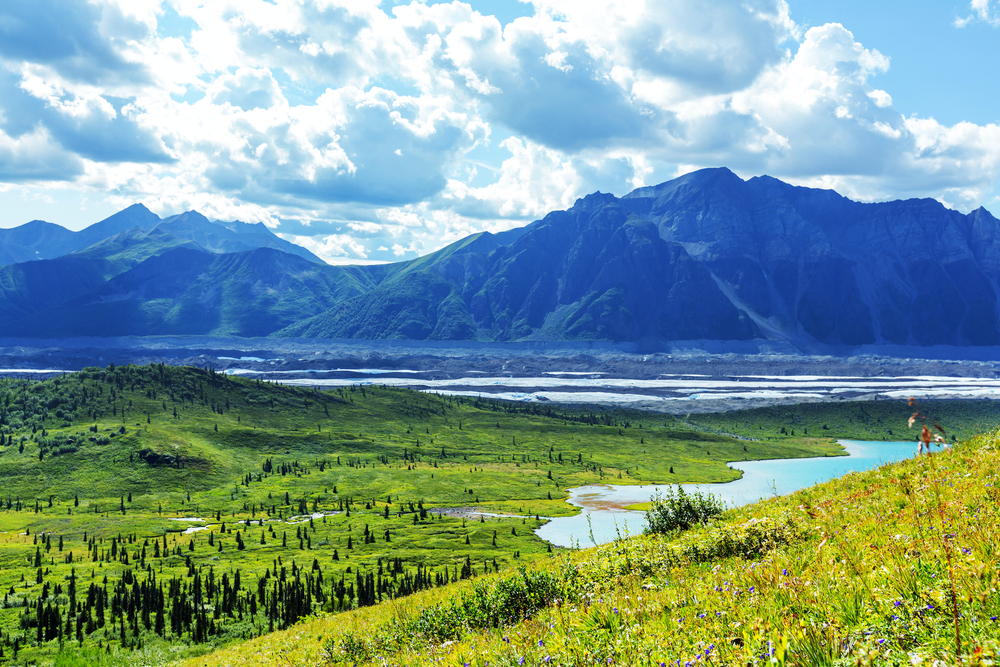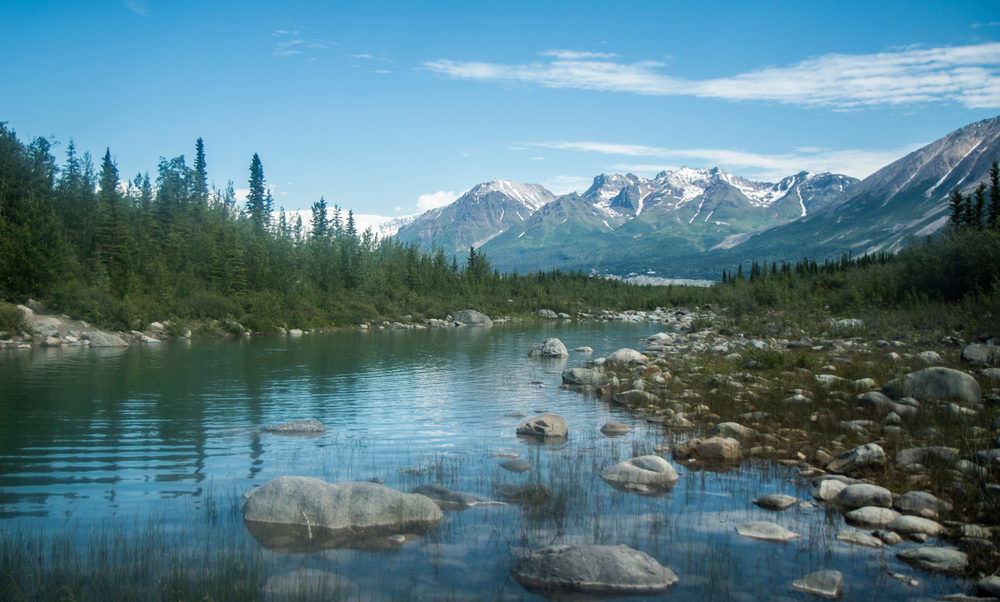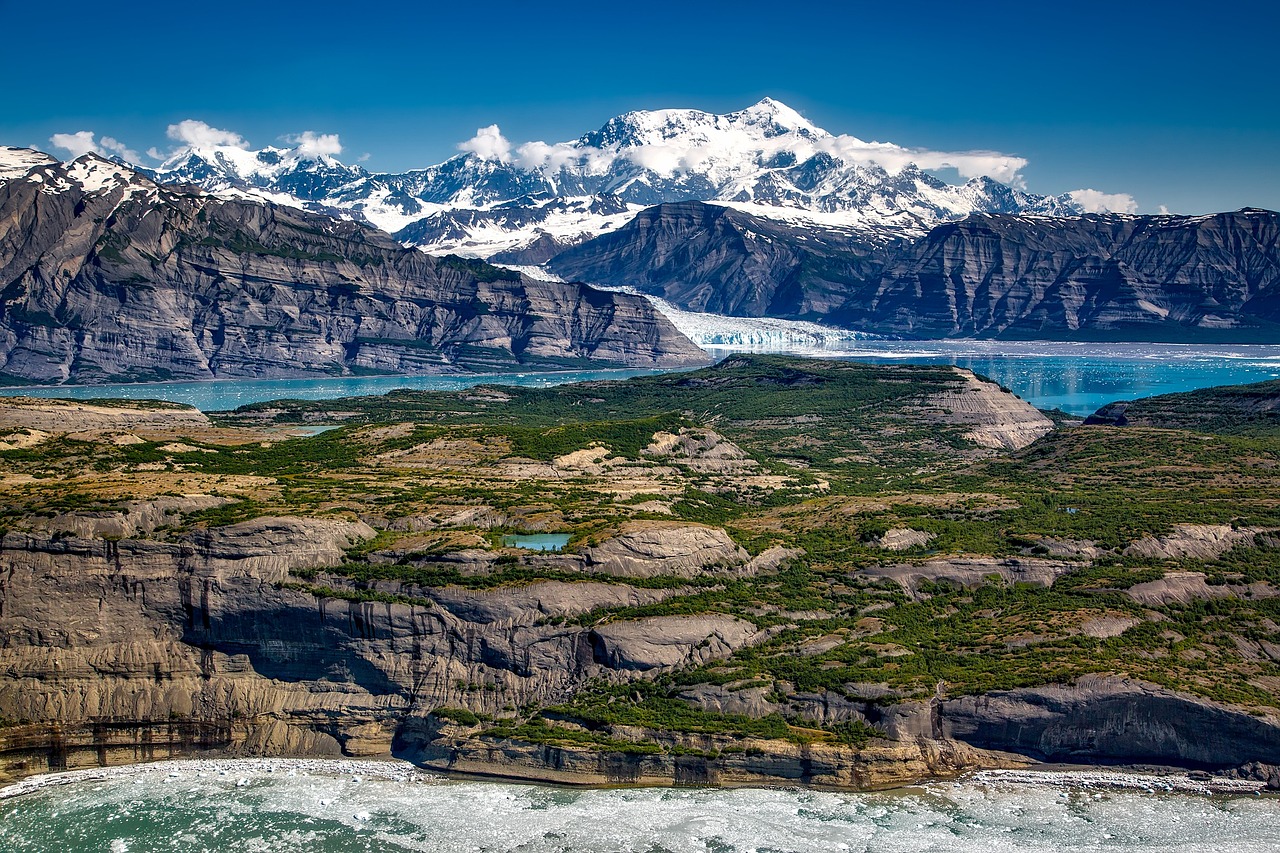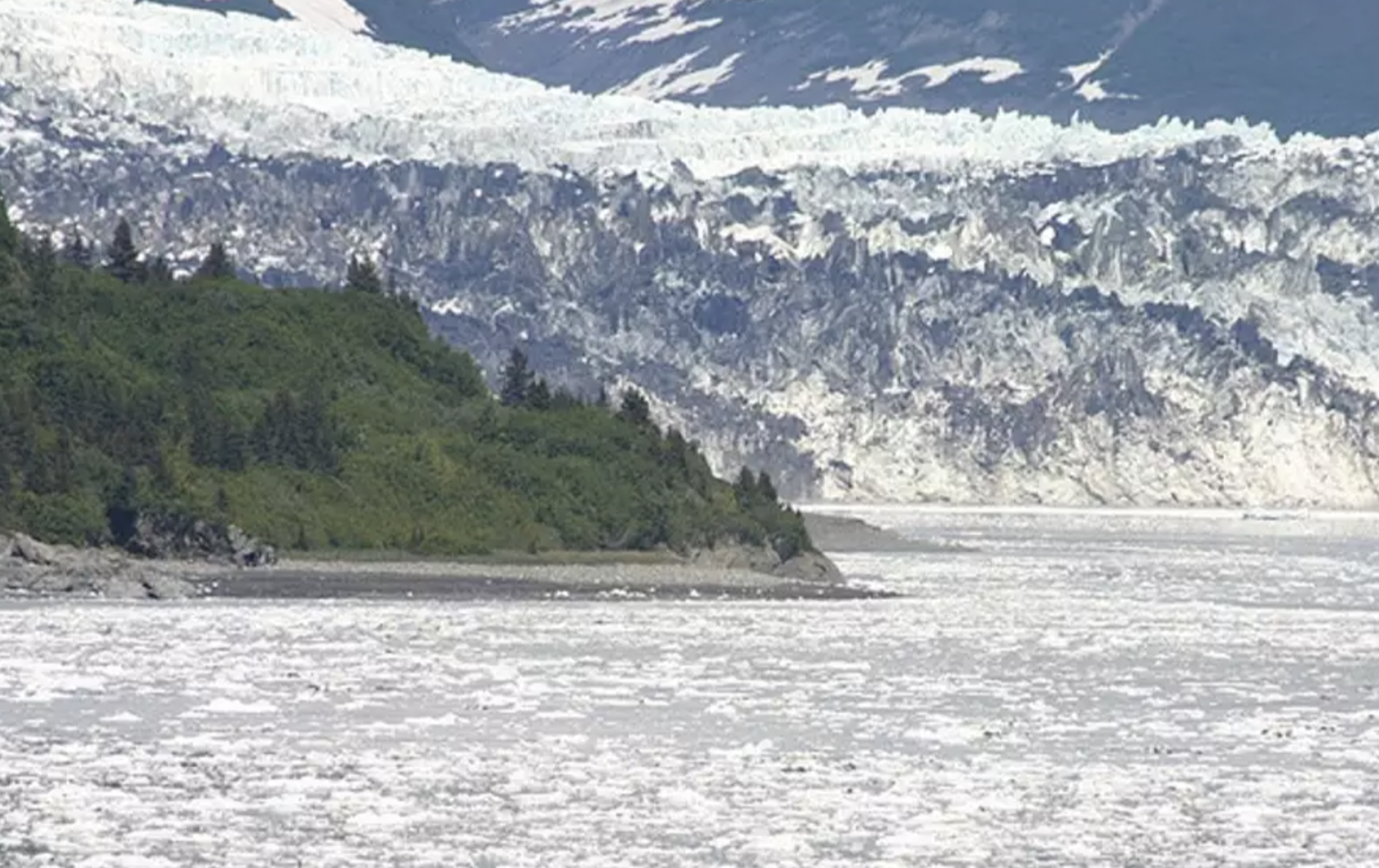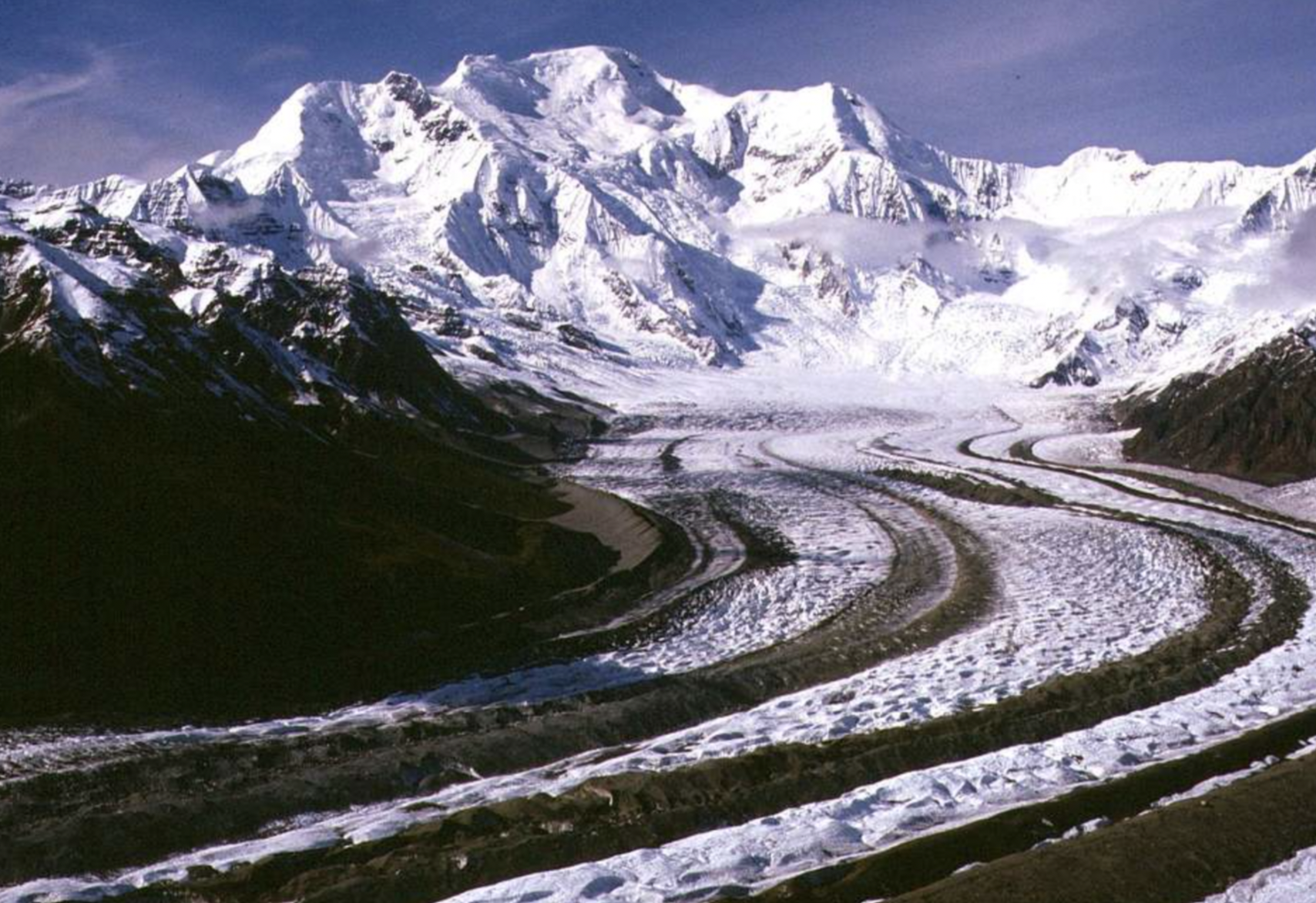Wrangell-St. Elias National Park is renowned for its immense scale and spectacular wilderness, embodying the essence of Alaska’s raw beauty.
As the largest national park in the United States, it covers an area of over 13 million acres (52,600 km²), making it larger than the countries of Switzerland, Andorra, and San Marino combined.
The park is known for its extraordinary diversity of geological formations, including the volcanoes of the Wrangell Mountain range, the rugged peaks of the St. Elias Mountains, and the vast icefields that feed some of the world’s most spectacular glaciers, such as the Malaspina Glacier, which is larger than the state of Rhode Island.
Wrangell-St. Elias is also home to Mount St. Elias, which, at 18,008 feet (5,489 meters), is the second-highest peak in both the United States and Canada.
Adventure and solitude are in ample supply here, with opportunities for backcountry hiking, mountaineering, kayaking, and flightseeing. Despite its size and the array of activities it offers, the park sees relatively few visitors compared to other national parks, offering an unparalleled sense of wilderness and adventure.
The park is also part of a larger UNESCO World Heritage Site due to its outstanding natural values, including significant glaciology, geology, and ecology components, making it a prime destination for nature lovers, adventurers, and scientists alike.











































































